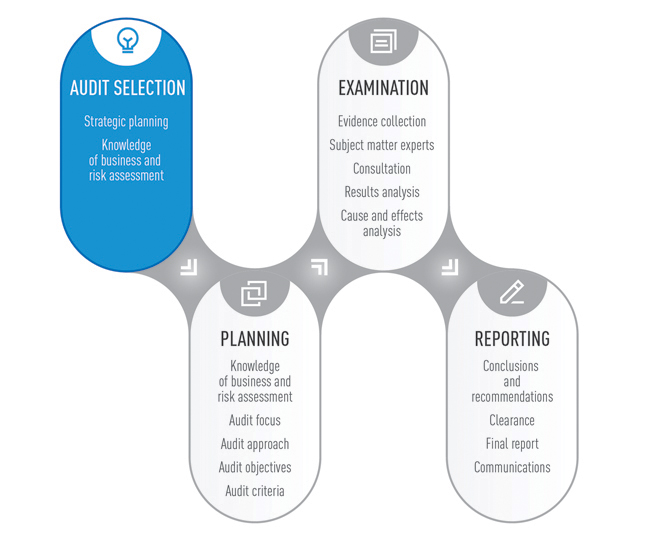Audit Topic Selection and Definition

The first step in the performance audit process is to select and define a topic. Often, selection of audit topics is done as part of an office’s long-term or strategic planning process. This Practice Guide suggests that the importance of gender equality may influence audit topic selection and definition.
The planning processes and criteria used to select and define audit topics vary widely from one office to another. In most cases, internal and legislative audit offices in Canada have the flexibility to choose (or at least propose) their own audit topics. The selection process usually involves senior audit executives who make decisions based on information generated by a risk analysis of some sort (or other method) as well as consideration of any constraints imposed by the audit’s timing, available resources and skills, and the auditability of the topic. In some offices, a senior auditor may have the responsibility to select an audit topic (or at least propose one for approval).
The outcome of an office’s planning process is a list of topics to be pursued over time. This section of the Practice Guide provides guidance to audit offices and individual auditors in determining whether, and to what extent, gender equality issues and programs should be reflected in the office plan. The essential question is whether gender equality is to be “scoped in” or “scoped out” of the overall plan or of individual audits.
Multi-year strategic planning at an audit office is useful in setting priorities and selecting potential audits. In some cases, the audit office may identify specific themes to be considered in the upcoming audits. Gender equality is one such candidate theme. Interest in gender equality—as reflected by the policies of audited organizations, program target populations, and a government’s international and national commitments—make this a candidate for an audit priority, especially where the government has prepared a gender-responsive budget and/or allocated resources to programming to support the achievement of gender equality commitments. Strategic planning will also provide a rationale when auditors explain to the auditee’s management why the audit is being conducted.
If an office has identified gender equality as a theme to be examined in its multi-year strategic planning process, the result is likely the identification of audit topics with a direct focus on gender equality. The following are some examples:
- the compliance of government agencies with legislation or policy directives on gender equality, such as gender representation in the workforce; and
- programs that aim to enhance gender equality in specific sectors, such as increasing girls’ enrolment in and completion of primary and secondary education.
Whether or not an office has established gender equality as an explicit theme in its planning process, this Practice Guide suggests applying a “gender lens” to selecting and defining topics and assessing organizations, programs, and policies.
Once an audit topic has been selected and defined, detailed planning of individual audits begins. This process typically involves determining the audit objectives, scope, criteria, evidence collection techniques, and so on. The processes for selecting audit topics and for detailed planning of individual audits share similarities. Both depend on acquiring a solid knowledge of business about the organizations or programs being considered for audit, although at different levels of detail.


